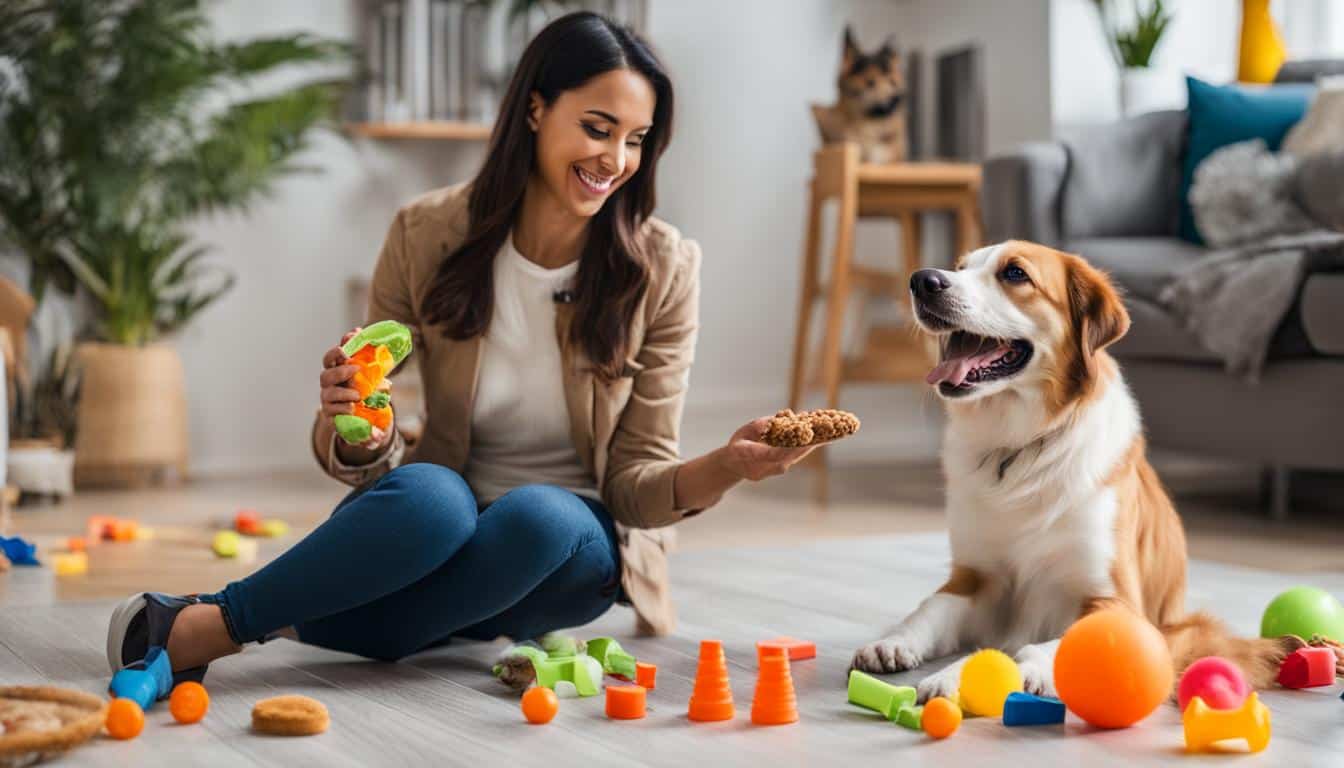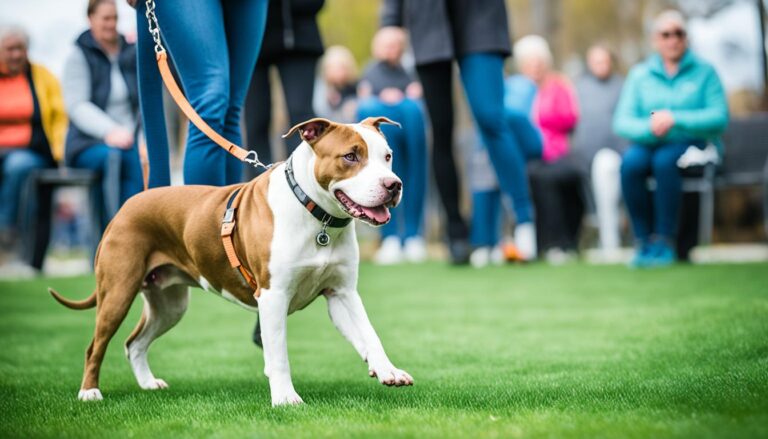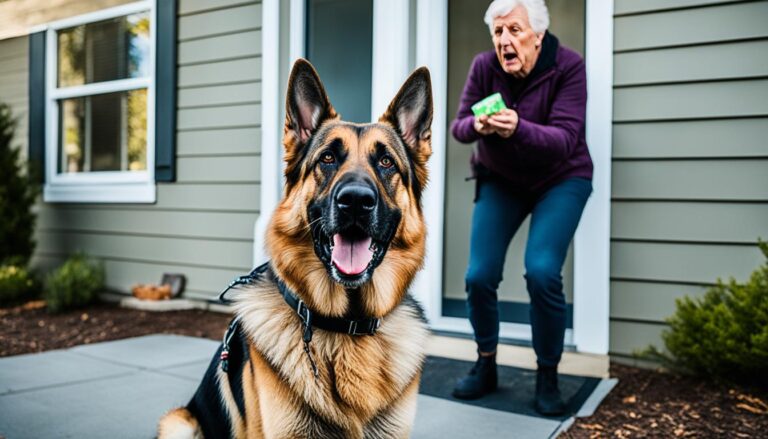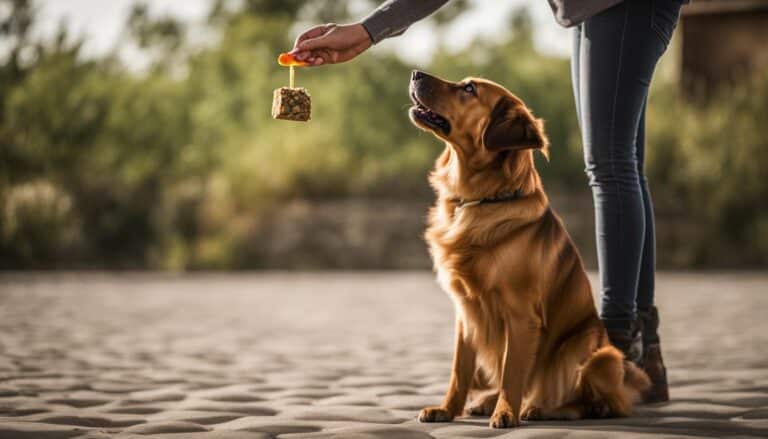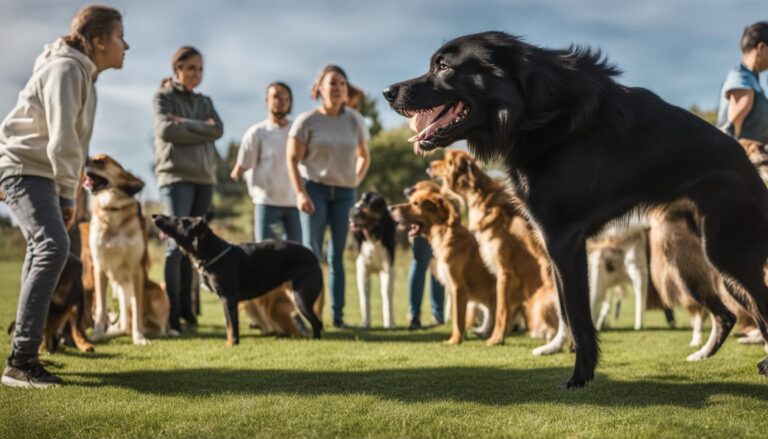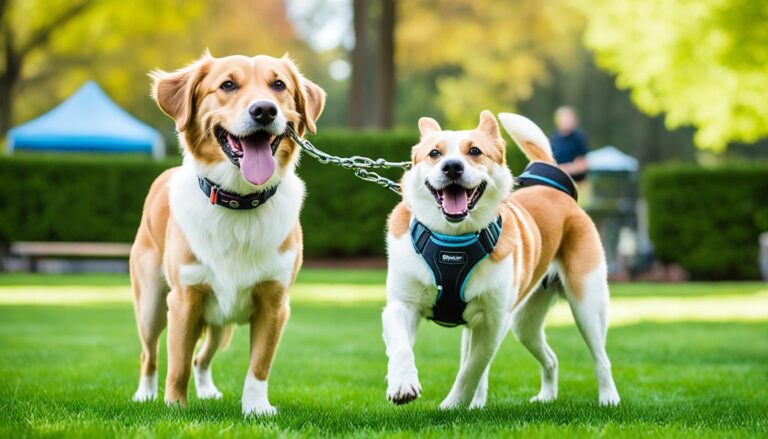How to Train a Disobedient Dog
Are you a proud dog owner, struggling with a furry friend who just won’t listen? We’ve all been there, feeling frustrated and overwhelmed as we try to navigate the world of dog training. But fear not, because in this article, we’re going to share effective dog training techniques that will help you transform your disobedient pup into a well-behaved companion.
From obedience training to positive reinforcement, we’ll provide you with the knowledge and tools you need to tackle even the most stubborn and unruly dogs. Together, we’ll navigate the challenging journey of correcting bad dog behavior and foster a strong bond of trust and obedience between you and your furry friend.
So, grab a cup of coffee, sit back, and get ready to discover the secrets to training success. Let’s dive in!
Is Your Dog Disobedient or Just Acting Like a Puppy?
When your dog exhibits challenging behaviors, it can be hard to determine whether they are being disobedient or simply acting like a typical puppy. Understanding the difference is crucial in order to address the issue effectively. Puppies, by nature, are full of energy and curiosity, and their behavior can be seen as unruly or disobedient. However, it’s important to keep in mind that puppies are still learning and developing.
Puppy behavior often includes being excitable, chewing on things, jumping up on people, and having a short attention span. These behaviors are a normal part of their developmental stage and can be managed through appropriate training and socialization. With time and consistent training techniques, most puppies gradually learn more self-control and become well-behaved dogs.
An unruly dog, on the other hand, is one that continues to exhibit challenging behaviors even after the puppy stage. They may consistently ignore commands, display aggression, have difficulty with impulse control, or engage in destructive habits. These behaviors can be indicative of deeper issues that require specific training methods and behavioral interventions.
So how do you determine whether your dog is just acting like a typical puppy or if their behavior is truly disobedient? One key factor is considering your dog’s age and stage of development. If they are still in the puppy phase, it’s important to give them time to learn and grow. However, if their behavior persists well into adulthood, it may indicate a need for additional training and behavior modification.
Training a puppy requires patience, consistency, and positive reinforcement. By focusing on reward-based training techniques, you can help shape your puppy’s behavior and teach them appropriate manners. Socialization and exposure to various environments also play a crucial role in their development, helping them become well-adjusted adult dogs.
Remember, it’s essential to have realistic expectations and understand that your puppy is still learning. With proper guidance and training, their exuberant puppy behavior will gradually subside, and you will have a well-behaved companion. By nurturing them through their behavioral development, you can set a solid foundation for a happy and obedient dog.
Preventing Disobedience: Early Training and Exercise
To prevent your puppy from becoming a disobedient dog, it is crucial to start training early and provide regular exercise. Early dog training lays the foundation for good behavior and teaches your puppy essential skills.
Exercise plays a vital role in your puppy’s overall well-being and development. Regular physical activities help burn off excess energy and prevent boredom, which can lead to destructive behavior. Make sure to provide appropriate exercise for your puppy’s age and breed, such as daily walks, playtime, and interactive toys.
In addition to exercise, teaching self-control to puppies is key. Dogs need to learn how to manage their impulses and stay focused even in exciting or challenging situations. Teaching your puppy basic commands like sit, stay, and leave it helps establish boundaries and reinforces your role as the pack leader.
Consistency is crucial in early dog training. Set clear rules and expectations for your puppy and ensure everyone in the family follows them consistently. This helps your puppy understand what behavior is acceptable and what is not.
Training sessions should be short and frequent. Puppies have limited attention spans, so multiple short sessions throughout the day are more effective than one long session. Use positive reinforcement techniques, such as praise, treats, and playtime, to reward your puppy for good behavior and motivate them to continue learning.
Remember, early training and exercise are essential for preventing disobedience in dogs. By providing structure, exercise, and consistent training, you can set your puppy up for success and foster a well-behaved and obedient dog.
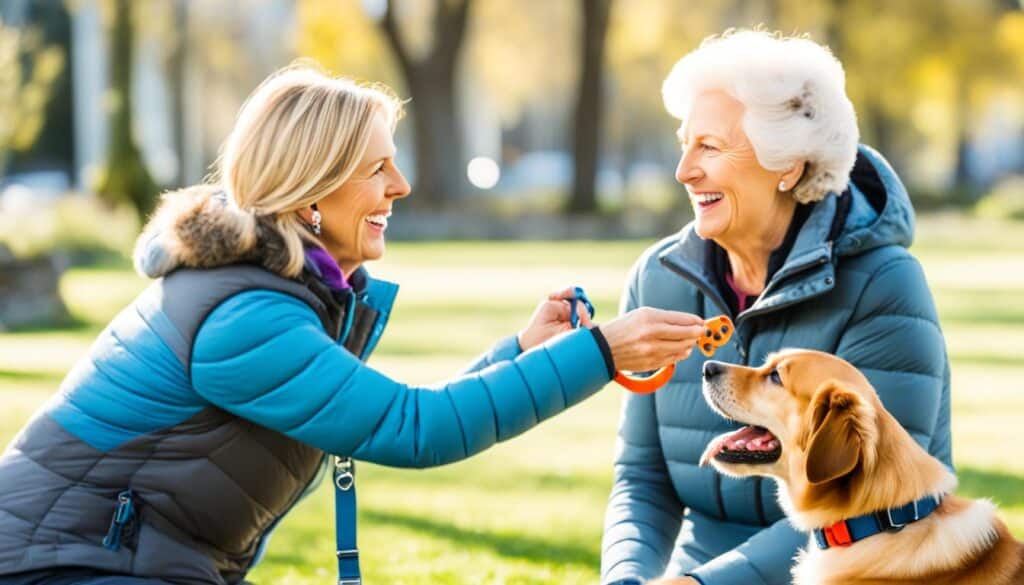
- Start training your puppy as early as possible
- Provide regular exercise tailored to your puppy’s needs
- Teach basic commands to establish boundaries and self-control
- Be consistent with rules and expectations
- Use positive reinforcement techniques for effective training
By following these tips, you can prevent disobedience in your dog and ensure a harmonious relationship between you and your furry companion.
Common Training Mistakes and How to Correct Them
When it comes to training our dogs, we all want to do our best to ensure they become well-behaved and obedient companions. However, sometimes even the most well-intentioned owners unintentionally make common training mistakes that can hinder their dog’s progress and even reinforce bad behavior. In this section, we will explore some of these mistakes and provide guidance on how to correct them to create a more effective training experience for you and your furry friend.
One of the most common training mistakes is inconsistent rules. Dogs thrive on consistency and clear boundaries. If you are not consistent in enforcing the rules you’ve set, your dog may become confused, leading to disobedience. Make sure everyone in your household follows the same set of rules and applies them consistently.
Another mistake is unintentionally rewarding undesirable behaviors. Dogs are quick to associate their actions with consequences, and if they receive attention or treats for behaviors you want to discourage, they will continue to engage in those behaviors. Be mindful of the behaviors you are inadvertently reinforcing and redirect your dog’s attention to more desirable actions.
- Avoid punishing your dog as a training method. While punishment may seem like a quick fix, it can have detrimental effects on your dog’s trust and willingness to learn. Instead, focus on positive reinforcement by rewarding good behavior. This will motivate your dog to repeat those actions and build a strong bond of trust between you.
- Use clear and concise communication during training sessions. Dogs rely on their understanding of verbal and visual cues to learn and respond to commands. Be consistent with your chosen commands and use positive body language, such as hand signals, to reinforce your verbal cues. Avoid using confusing or contradictory signals that may confuse your dog.
By addressing these common training mistakes and adopting more effective techniques, you can set your dog up for success. Remember, patience and consistency are key when it comes to training your furry companion.
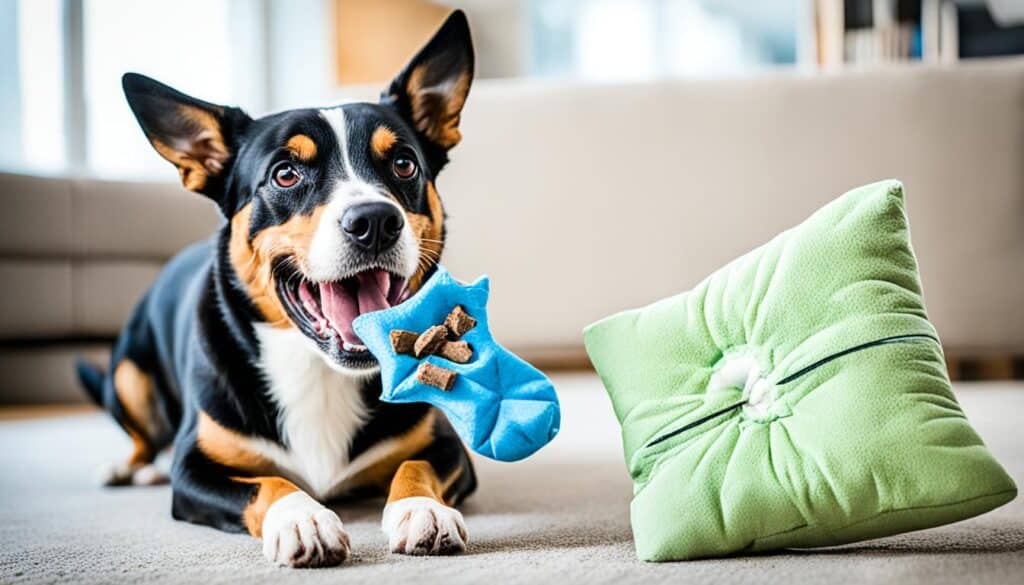
Regaining Control: Retraining Techniques
If you find yourself struggling with a disobedient dog, don’t lose hope. With the right retraining techniques, you can regain control and turn your dog’s behavior around. In this section, we’ll explore effective methods like head halter training and clicker training that can help you achieve the results you desire.
Head Halter Training
One retraining technique that has gained popularity is head halter training. This training method involves using a specialized halter that fits around your dog’s muzzle and head, giving you better control during walks and other situations. By guiding your dog’s head, you can redirect their attention and discourage unwanted behaviors. Remember to introduce the head halter gradually and use positive reinforcement to make it a positive experience for your furry friend.
Clicker Training
Another effective retraining technique is clicker training. This method involves using a small handheld device that makes a clicking sound when pressed. The clicker serves as a marker to indicate when your dog performs the desired behavior. By pairing the click with a reward, such as a treat or praise, you can reinforce positive behaviors and help your dog understand what you expect from them. Clicker training is a gentle and fun way to engage with your dog and build their obedience skills.
Both head halter training and clicker training require consistency and patience. It’s essential to set clear expectations, be consistent in your training sessions, and reward your dog for their progress. Remember to use positive reinforcement techniques, as punishment or harsh methods can lead to fear or aggression in your dog.
Addressing Specific Behavior Issues
If you have a disobedient dog, you may be dealing with specific behavior issues that need to be addressed. Understanding the root causes of these behaviors and implementing effective training techniques can help your dog overcome them and become a well-behaved pet.
Leash Pulling
Does your dog constantly pull on the leash during walks, making it difficult to enjoy a peaceful stroll? Leash pulling can be frustrating and even dangerous. To address this issue, consider using positive reinforcement techniques. Reward your dog with treats and praise when they walk calmly by your side. Utilize a front-clip harness or head collar to provide better control and discourage pulling. Remember to be patient and consistent in your training efforts.
Jumping on Furniture
Is your dog constantly jumping onto furniture, creating a mess or disrupting your living space? Training them to stay off the furniture is essential. Start by teaching your dog the “off” command and reward them when they listen. Provide alternative comfortable spaces, such as a designated dog bed, and consistently redirect them to that area. Reinforce positive behavior and discourage jumping on furniture by using positive reinforcement techniques.
Jumping on People
Does your dog have a tendency to jump on people, whether it’s family members or guests? While this behavior can be seen as friendly, it can also be uncomfortable or even dangerous. To address this issue, teach your dog the “off” command and reward them when they keep all four paws on the ground. Encourage guests to ignore your dog until they remain calm and only interact when all jumping has stopped.
Feeding from the Table
Is your dog constantly begging for food at the table, making mealtime a challenge? Begging behavior can be irritating and lead to unhealthy eating habits. Teach your dog the “leave it” command to discourage them from approaching or begging for food. Provide them with their own designated eating area and reward them for staying in that space during mealtime. Consistently reinforce the desired behavior and politely ask guests to avoid feeding your dog from the table.
Achieving Lasting Results: Consistency and Communication
Consistency and effective communication are the key to achieving lasting results in dog training. When it comes to training your dog, consistency is crucial in establishing clear rules, expectations, and training methods. By maintaining consistency, you provide your dog with a structured environment that allows them to understand and respond appropriately.
Clear communication is equally important in building a strong bond with your dog and ensuring successful training outcomes. Through obedience commands, body language, and rewards, you can effectively communicate with your dog and establish a mutual understanding. Consistent and precise commands help your dog learn what is expected of them, while positive reinforcement motivates them to repeat desirable behaviors.
To maintain consistency and enhance communication, it’s important to set aside dedicated training time regularly. Make training sessions a part of your daily routine, reinforcing the rules and commands consistently. Utilize clear and consistent body language to convey your expectations to your dog. Additionally, ensure that rewards are given promptly and consistently to reinforce positive behaviors.
Remember, achieving lasting results in dog training requires patience, dedication, and the willingness to adapt your approach as needed. By prioritizing consistency and effective communication, you can create a harmonious relationship with your dog based on understanding and trust.
